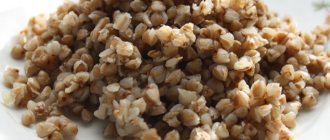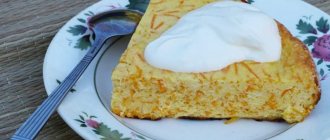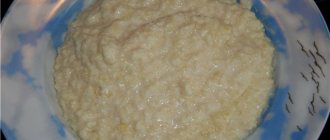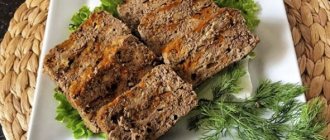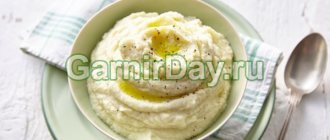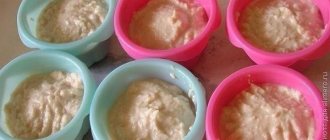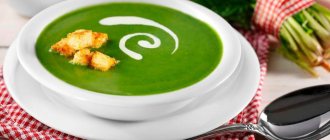Of course, the healthiest and most appropriate breakfast for any child will be porridge. However, not all children love this dish, and often refuse to eat it. Today we will talk about how to make porridge so that your child loves to eat it, and it is not only healthy, but very tasty.
Of course, the recipe for making porridge depends on the age of the child you will be preparing it for. If the child is a year old or a little younger, then the consistency of the porridge should be quite liquid, the whole mass should be homogeneous, this is due to the fact that if there are lumps in the porridge, the child will need to chew it thoroughly, which he is not yet capable of.
As for older children, there are much more options for porridges, since you can add fruits and nuts to them, as well as make the porridge thicker and choose different consistencies. In order to adjust the liquid level of the porridge, you need to add more or less water or milk to it, depending on the recipe. If you want to make the mass homogeneous, then you just need to place the porridge in a blender and grind thoroughly.
Baby porridge - general principles and methods of preparation
Baby cereals are introduced into a child’s diet as complementary foods from 7-10 months. After all, it’s time for the baby to receive more complete and balanced nutrition. You can buy special instant baby cereals, but you cannot give “quick” cereals, such as muesli, with various fillings. They are not adapted for the stomach of a small child; they contain dyes, flavor enhancers and other food substitutes. What can cause allergies or stomach upset in your baby? It is best to prepare porridge yourself from natural cereals. And you can start with rice. This cereal does not contain gluten, is completely hypoallergenic, and does not irritate the intestines at all. And then gradually you can introduce porridges from other cereals into the menu. For children under one year old, porridge with a liquid consistency is cooked.
Features of feeding
The baby’s ability to sit and confidently hold objects in his hand allows you to organize a new way of consuming food and the child’s menu at 7 months:
- feed from a spoon, and to gain skills in using the device, give the baby a spoon;
- Feeding the baby should be done exclusively in a sitting position, and it is advisable if he takes a place in a special chair at the common table;
- allow you to get acquainted with what is contained on the plate in a sloppy, yet “manual”, very educational way;
- drink from a cup and invite the baby to drink from a sippy cup or sippy cup on his own;
- set your own example of behavior at a common table, which will form the rules for eating in the future.
Baby cereals - food preparation
If you are preparing dishes for children, then the processing and preparation of products should be approached with special care. All cereals, except semolina, are sorted, i.e. inspected visually to prevent the ingress of foreign small objects, and then washed several times. If the dish includes vegetables or fruits, they must be thoroughly rinsed under water and peeled. And then, according to the recipe, they are cut into pieces or grated.
If there is a small child in the house, it is advisable to immediately buy a measuring cup with divisions so that it is convenient to measure the amount of cereal or liquid. For children under one year old, whole grains of any cereal must be ground to flour, and then the porridge should be cooked. It is convenient to use a coffee grinder for this. If there is no coffee grinder, then the finished porridge is rubbed through a sieve or ground with a blender and diluted to the desired consistency with water or infant formula (breast milk).
Baby porridge - the best recipes
Feeding: when, how much and what?
So, what to feed a 7 month old baby? The feeding regimen for babies of this age includes five meals a day. The main feature is the formation of meals corresponding to full future breakfasts, lunches and dinners. Day after day, new products replace mother's milk, which is now given exclusively before bedtime and in the morning.
Between feedings, intervals of 4 hours correspond to the physiological capabilities of the child’s body, without causing discomfort from the gastrointestinal tract. There are certain norms for food consumption. At the same time, the amount of food eaten depends largely on the characteristics of the baby:
- speed of metabolic processes;
- constitutions;
- physical activity.
Let's figure out what to feed a baby at 7 months. An approximate diet for a baby is presented:
- Vegetable puree.
- Baby formula or milk.
- Egg yolk.
- Porridge (vegetable broth or milk).
- Meat puree.
- Cottage cheese.
- Kefir.
- Canned or freshly prepared fruit puree (a child at 7 months can also be given juices).
- Bread.
- Crackers (dryer or cookies).
So, what should you give your baby at 7 months? There is a traditional order of introducing complementary foods: vegetable purees and cereals are offered at 6 months during breastfeeding, earlier during artificial feeding, after 2 weeks alternately - yolk, kefir, butter, meat, after 8 months - cottage cheese.
Recipe 1: Rice porridge with apple for children
You can start introducing such porridge into your baby’s diet at six months of age. And older children will eat it with pleasure. Rice porridge can be cooked with or without apples. Children over the age of one year can cook rice in milk and add a little sugar, fructose or jam to the plate. Rice grains must first be ground in a coffee grinder or blender. Ingredients: 3 tablespoons rice, 250 ml water, butter, small apple. Cooking method
Pour the crushed rice with water, add an apple (you must first peel it and cut it into pieces). Cook the porridge for 15 minutes, then beat in a blender until pureed, add butter. If porridge is cooked for babies under one year old, you can add formula or breast milk.
Psychomotor development
Every day the baby pleases and surprises his parents with the development of new skills. Not so long ago he just started sitting, and at 7 months he can already step with his legs on his own, rise from a support, squat and sit on his knees. Interest in the world around him arises in the desire to get acquainted with various objects that appear in his field of vision. The baby grasps large toys well and confidently transfers them from hand to hand.
The child is now starting to crawl, and does it equally well backwards and forwards. This method of movement opens up new horizons for the baby: it becomes possible to independently pick up any object of interest, as well as get to know the space better. Interest in the surroundings is not limited to contemplation, and at the first opportunity, the little researcher will definitely try everything that is in the access zone. The baby is happy to find familiar objects at the request of adults and turns towards the speaker when he hears his own name. At this age, attachment to family is especially evident. The child recognizes loved ones with whom he is happy to meet after a long sleep. There is wariness towards strangers.
Waking time is accompanied by constant babbling - regularly repeated syllables that are mistakenly perceived by adults as conscious speech. At the same time, the baby's babble is the initial attempts to communicate, imitation of adults, as well as the expression of an emotional state. The baby turns from a listener into an interlocutor who willingly repeats intonation and syllables.
Recipe 2: Semolina porridge for children
Semolina porridge is recommended to be given to children from one year of age. Milk is diluted half and half with water. From the age of three you can cook porridge with milk alone. It is generally accepted that semolina is cooked for 10-15 minutes. During this time, it manages to boil well, but also loses a certain amount of protein and nutrients. Therefore, it is better to change the cooking technology: boil the porridge for two to three minutes, then remove from the stove and wrap in a towel for 10-15 minutes. During this time, the porridge will swell and become ready.
Ingredients : semolina - 4 teaspoons, 250 ml of liquid (125 ml of milk + 125 ml of water), sugar (fructose), butter - 5g.
Cooking method
Bring the liquid to a boil and add semolina. It is convenient to do this through a sieve. Firstly, the cereal is sifted in thin streams and no lumps are formed, and secondly, if there is any debris in the cereal, it will remain in the sieve.
Let the porridge boil for about two minutes, remove from heat and wrap in a towel or blanket for 10 minutes. Add butter, sugar or jam to the plate with porridge and mix well.
Breastfeeding diet
Introducing complementary feeding to a child at 7 months fulfills two main tasks - it compensates for the lack of mother's milk, and also prepares the baby for eating adult food. There is an opinion that with normal lactation in the mother, the time for introducing complementary foods can be postponed until later. Although there is a second point of view, which is aimed in favor of introducing complementary foods:
- helps to master chewing skills in a timely manner;
- acquaintance with various new products stimulates the motor and enzymatic functions of the digestive system;
- provides the baby with additional sources of energy, minerals and vitamins, building material, compensating for the costs of increasing physical activity, development and growth.
Now let's see what explains the presence of various dishes on the baby's menu.
Recipe 3: Oatmeal with banana for children
To prevent oatmeal from becoming boring, you can serve it with jam, honey or various fruits - banana, grated strawberries, or apple.
Ingredients : 3 tbsp oatmeal, glass of milk, ½ banana, salt, 1 tsp. Sahara.
Cooking method:
Boil milk (you can dilute it with water), add sugar, a pinch of salt, add oatmeal. Turn the heat to low and cook for half an hour. Allow the finished oatmeal to cool slightly, add the chopped banana and blend with a blender.
Purees and meat broths
From the age of 7 months, meat appears on the baby’s menu in the form of veal puree, lean beef, chicken fillet, turkey, and rabbit. It is worth noting that the range of food departments for children is ready to offer a huge selection of products from domestic and foreign manufacturers (Hipp, Heinz, “Babushkino Lukoshko”, Gerber, “Agusha”, “Tema”, Fleaur Alpine, etc.). It is important to look at the age recommendations indicated on each jar.
Trying to diversify a child’s diet at 7 months by introducing meat, you can prepare it at home, which is not at all difficult:
- Cook the meat, chopped into pieces, until cooked.
- Grind thoroughly with a blender.
- Before feeding, dilute the prepared broth to the consistency of a light puree.
- If the child refuses the proposed dish, add it to vegetable puree or porridge.
Meat products take longer to digest than the same vegetable soup for a 7-month-old child, therefore, they are always given lunch time. Light, non-rich broths are used to create vegetable puree soups and porridges. They improve the digestion process, while increasing the activity of the secretory glands.
During this period of time, the bottle-fed baby tries new types of cereals, and also gets acquainted with pureed vegetable soups with meat broth and other multi-component purees. What fruits can a 7 month old child have in this case? Apple, banana, prune, pear - these are the fruits that the baby can already try. Meat puree once a week can replace puree made from liver.
Regardless of the type of feeding, 7-month-old babies should be encouraged to try solid food, of course, if they have already developed teeth. Crackers, dry bread or children's cookies for an afternoon snack are an excellent opportunity to stimulate the chewing process in time. At the same time, a slow transition gradually begins from homogeneous purees to food containing small lumps and pieces. At the same time, a special grater is used to create puree from fresh vegetables and fruits, while boiled vegetables are simply chopped with a fork.
Recipe 4: Corn porridge with milk for children
Porridge for children over one year old. If you cook it for babies, you should first grind the cereal into flour in a coffee grinder or beat the ready-made porridge in a blender. If porridge is being prepared for children over one year old, add butter to the plate and sweeten with jam, sugar or honey.
Ingredients : 3 tbsp. spoons of cereal, 250 ml of water, 100 ml of milk.
Cooking method
Stir 3 tbsp in water. spoons of cereal, boil. Turn the heat to low and cook for 20 minutes. Beat the porridge in a blender (if necessary).
Next, pour milk into the mixture, bring to a boil and cook over low heat for 5-10 minutes. At the end, add a piece of butter, you can add a grated banana.
Eggs – only boiled yolk
What else is included in a 7 month old baby's diet? Eggs appear on the baby’s menu only after the introduction of porridge. There is no particular difference in properties between quail and chicken eggs. In their raw form, any of them can cause salmonellosis. Doctors always insist on following the necessary rules for their preparation: wash thoroughly before cooking, check for freshness (the missing ones “stand” vertically in the water or float), cook for at least 10 minutes.
Yolk, like white, can cause allergies. Therefore, it is administered with caution. At the 10 o'clock breakfast, they offer a yolk (1/8), ground with milk, on the tip of a spoon. After 3 days, in the absence of allergies, the yolk is increased to 1/4, gradually increasing to ½ yolk a maximum of twice a week.
This valuable product will provide the growing body with vitamins, phosphorus and selenium. If the baby refuses to eat the offered yolk in its pure form, the product is mixed with vegetable puree or porridge, which can also diversify the diet of a 7-month-old child.
Recipe 5: Buckwheat porridge with milk for children
For children's porridges, it is better to buy unroasted buckwheat (light yellow-green color) - it contains more useful substances. But regular buckwheat will do as well.
Ingredients : buckwheat – ½ cup, water – 1.5 cups, ½ cup milk, 10 g butter, sugar and salt to taste.
Cooking method
Pour water over buckwheat and bring to a boil. Reduce heat and simmer, covering with a lid, until the water boils away, about 15 minutes. Remove from heat, wrap in a towel for 10 minutes to allow the buckwheat to melt. Add milk to the porridge, add salt, sweeten and bring to a boil. Remove from heat, add butter. Serve the porridge warm.
About etiquette
The baby is growing up before our eyes, therefore, a 7-month-old child should be taught proper behavior in the kitchen:
- Let the baby strive to master the art of using a spoon as a method of independently obtaining food. Make a mental note that learning how to handle a spoon is currently more important than order and cleanliness in the kitchen.
- Since the baby is already sitting confidently, buy him a high chair that will meet safety requirements.
- Eating food should be an extremely enjoyable experience. If a child refuses a certain dish, you should not force feed him. In this case, try to find out the reason for the refusal. The food was probably too hot.
Recipe 6: Millet porridge with pumpkin for children
When fresh, pumpkin is stored until spring without losing its beneficial properties. Therefore, during the winter months, it will help the child get the necessary vitamins. It is used to make casseroles, pancakes, and porridge. They turn out juicy and tasty and are liked by many children.
Ingredients : ½ cup millet cereal, a glass of milk, 2 small pumpkin slices (about a glass if cut into pieces), sugar and salt, butter.
Cooking method:
Pour water over the millet so that it covers the grain by about 2 centimeters. Cook for 15 minutes, turn off the heat, leave the porridge on the stove. At this time, you can start pumpkin.
Cut the pumpkin into small pieces, add milk and cook. As soon as it is cooked and becomes soft, it must be crushed and added to the millet porridge. Add salt, sweeten, if the porridge turns out to be thick, add hot milk and boil for 3 minutes. Add butter and serve.
Artificial baby diet
It should be understood that artificial feeding does not meet all the needs of a small body, like breastfeeding. Even adapted high-quality formulas cannot provide the baby with the required amount of essential nutritional elements. Consequently, feeding a 7-month-old child on artificial feeding involves the introduction of complementary foods a month earlier than for babies on natural feeding.
Products unfamiliar to babies have long been included in the diet of artificially-trained children - pureed meat, porridge, egg yolk. According to indications, liver, meat, kefir and cottage cheese can be introduced into the menu earlier.
Sample menu for each day of the week
You can cook a wide variety of dishes for your little ones. Here is an approximate daily menu for one week, with the first (breakfast No. 1) and last feeding of the child (dinner) being breast milk or infant formula.
| Day of the week | Eating | What can you offer your baby? |
| Monday | Breakfast No. 2 | Semolina porridge with dried fruits (150 g), cottage cheese with peach pulp (50 g), pear puree (50 g). |
| Dinner | Cabbage and pumpkin puree (180 g), turkey mousse (70 g), 1/2 yolk, compote (150 ml), bread. | |
| Afternoon snack | Homemade yogurt (100 g), buckwheat porridge (50 g), green apple puree (50 g), children's cookies (5 g). | |
| Tuesday | Breakfast No. 2 | Buckwheat porridge with pumpkin (100 g), plum puree (50 g), children's cottage cheese (50 g). |
| Dinner | Potato soup with meatballs with onions, cabbage, carrots, herbs (200 g), pear and peach puree (50 g), bread. | |
| Afternoon snack | Children's kefir (100 ml), oatmeal (100 g), green apple, baked in the oven. | |
| Wednesday | Breakfast No. 2 | Rice pudding (100 g), jelly (50 g), curd soufflé (50 g). |
| Dinner | Pumpkin soup (200 g), fish cakes (50 g), fruit juice (50 g), bread (5 g). | |
| Afternoon snack | Homemade yogurt (100 ml), corn porridge with pear and apple (100 g) crackers. | |
| Thursday | Breakfast No. 2 | Oatmeal with berries (100 g), children's cottage cheese (50 g), chopped prunes. |
| Dinner | Vegetable puree from broccoli and rabbit meat (200 g), peach puree (50 g), fruit juice (80 g), bread (5 g). | |
| Afternoon snack | Kefir for children, rice porridge (100 g), children's cookies (5 g). | |
| Friday | Breakfast No. 2 | Corn porridge with pear (100 g), children's cottage cheese (50 g), pear puree (50 g). |
| Dinner | Chicken soup (200 g), pear puree (50 g), berry juice (70 g), bread (5 g). | |
| Afternoon snack | Homemade yogurt (150 g), children's cookies (5 g), barley porridge (100 g). | |
| Saturday | Breakfast No. 2 | Buckwheat porridge with peach (100 g), cottage cheese for children (50 g), fruit juice. |
| Dinner | Puree of zucchini, carrots, turkey meat (200 g), baked apple with berries, bread (5 g). | |
| Afternoon snack | Kefir (150 ml), crackers, oatmeal (100 g), applesauce (50 g). | |
| Sunday | Breakfast No. 2 | Barley porridge with pumpkin (100 g), cottage cheese with plum (50 g), fruit jelly. |
| Dinner | Vegetable soup with beets (180 g), fish puree (50 g), fruit puree from peach and pear (50 g), compote (100 g). | |
| Afternoon snack | Yogurt with pear puree (150 g), children's cookies, buckwheat porridge (100 g). |
